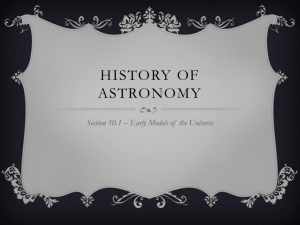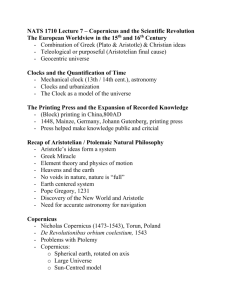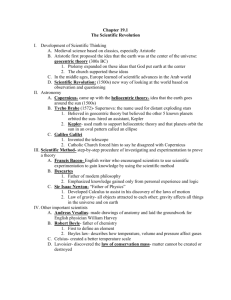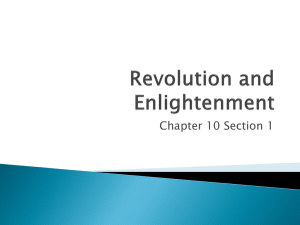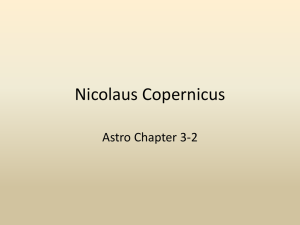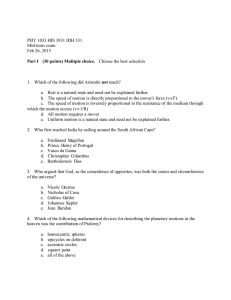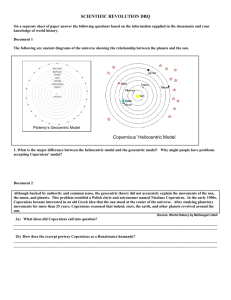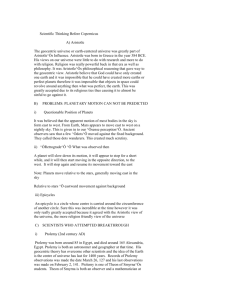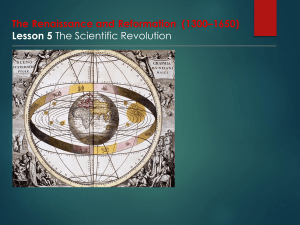#9
advertisement
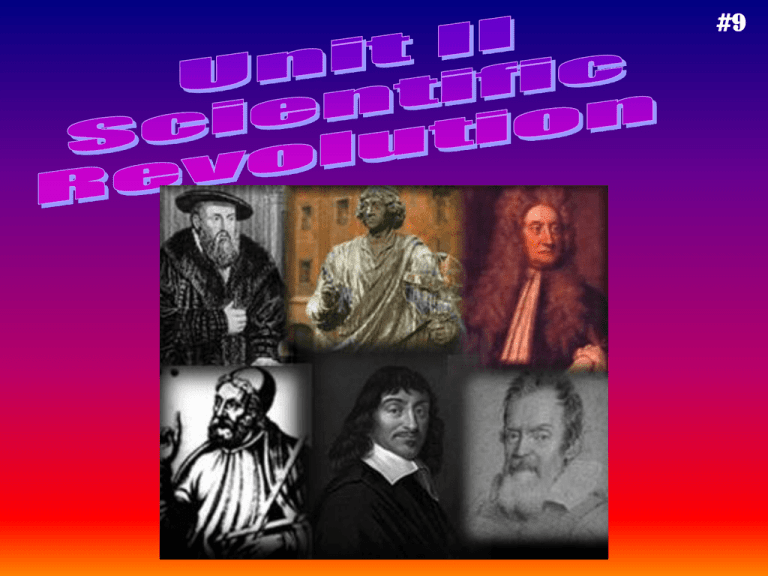
#9 #10 The Scientific Revolution began with the European re-discovery of Aristotle in the 12th and 13th centuries. The earliest followers were burned at the stake as heretics because they went against church teachings. Over time, teachings are combined with church doctrine to form a watered – down science. In the Middle Ages, scientists were mostly concerned with alchemy – standard chemistry problems Roger Bacon – most important scientist of this time. Invented gunpowder Came up with experimental science Despite this progress, people believed the center of truth and existence was God. The Scientific Revolution gains momentum during the Renaissance with the works of Leonardo da Vinci in the middle of the 15th century, and Nicolaus Copernicus in the 16th century. “Here, right here, in the eye, here forms, here colors, right here the character of every part and everything of the universe are concentrated to a single point. How marvelous that point is! In this small space the universe can be completely reproduced and rearranged in its entire vastness!” (da Vinci) Da Vinci is saying humans can see the universe in the same way as God can encompass the universe. This is a huge shift in the European thought! Now people were willing to extend their views to new things –science. Arabic Numerals During the Middle Ages, Europeans switched from Roman to Arabic numerals. This is very important for the Scientific Revolution. Without this system, Copernicus could not have made his mathematical calculations, Arabic numerals use a place number system consisting of ten numerals – when these are used up, a new number is added. Allows for fast calculations. Try to multiply: MDMCXLVII BY CCCLXXII without converting to Arabic Numerals AS THE WORLD TURNS Geocentric Heliocentric Old Geocentric Theory Official view of the Catholic Church Geocentric: Earth-centered Sun rises Sun sets Earth seems still Geocentric Theory Proof: Earth seems stationary Sun seems to move across the sky Bible quotes Blind acceptance of Greek teachings Man views himself as focus of the universe Teachings of Aristotle – 300 BCE World is made up of 5 elements: Earth, air, water, fire and Quintessence Earth does not rotate. Teachings of Aristotle Clear, round, domes hold planets and stars. Laws of Motion: Things move by weight or violent force Ptolemy 150 CE (Greek) Agrees with Aristotle Used math and Geometry to “prove” the Geocentric Theory Problems: •Planets must travel in loop orbits •Does not fit calendar •Math is forced NEW HELIOCENTRIC THEORY The theory is introduced by Copernicus (1473 – 1543) a Polish astronomer and mathematician Goal: Fix the problems of Ptolemy (Calendar and math) Make the sun the center and the math works! HELIOCENTRIC THEORY Sun is the center of the universe. The earth revolves around the sun and it rotates Problem: It goes against the teachings Aristotle and “common sense” On the Revolutions of the Celestial Spheres, the book written by Copernicus is not published until after his death Tycho Brahe (Danish mathematician) Takes measurements for over 20 years Really supported Aristotlewanted to prove Copernicus wrong Provides the mathematical evidence that Copernicus is correct. Leaves his work to assistant Johannes Kepler Johannes Kepler (1571 – 1630) German The Proof: Used Brahe’s measurements – made one adjustment, and the math worked perfectly! Laws: Planets travel in an Ellipse Planets travel slow then fast Figure distance from sun by how long it takes to revolve around sun. T² = ka³ Galileo Tells The World Galileo (1564 – 1642) Italian Always liked proving Aristotle wrong On Motion: Things fall at an equal rate Objects tend to stay in motion First Telescope Sees Venus, moon, and 4 moons of Jupiter Visual proof Copernicus is correct Galileo tries to convince the church – told to be quiet Wrote The Dialogs – 3 guys talking (Galileo, Copernicus, and Ptolemy). Used the book to prove his point, but says Ptolemy is correct Wrath of Catholic Church: Defensive of Criticism – Galileo put on trial Found Guilty of heresy – going against the Pope Sentenced to house arrest until his death Never figured out gravity. The final piece – Gravity! Sir Isaac Newton 1642 – 1727 (England) Explains orbit of planets: Gravity and Inertia Created Calculus to help explain Finalized the Laws Of Motion Law #1 Objects in motion tend to stay in motion, objects at rest tend to stay at rest. (Unless acted upon by another force) Law #2 Change in motion is proportional to force Law #3 For each action there is an equal and opposite reaction Law of Gravity: All objects have a natural attraction that varies with mass and distance
